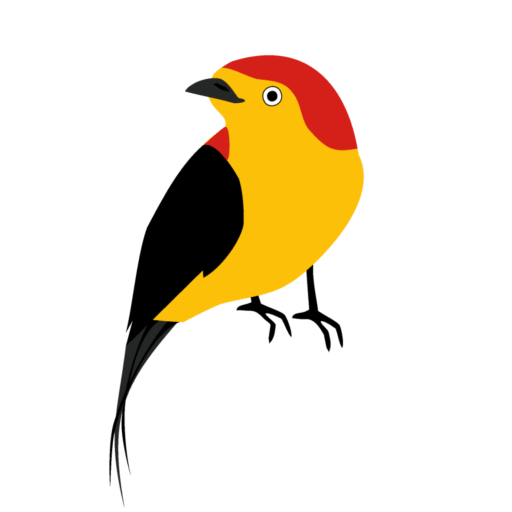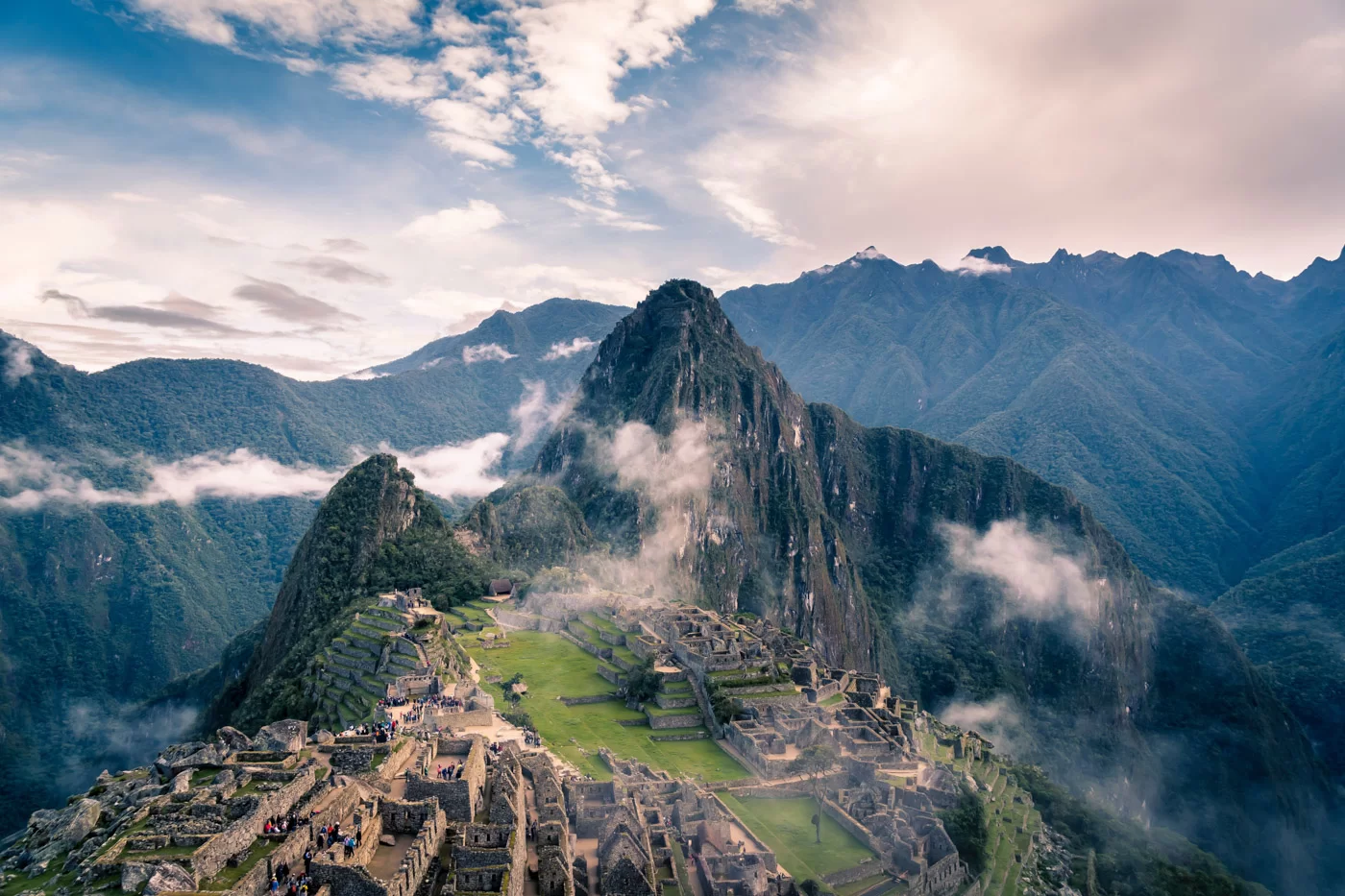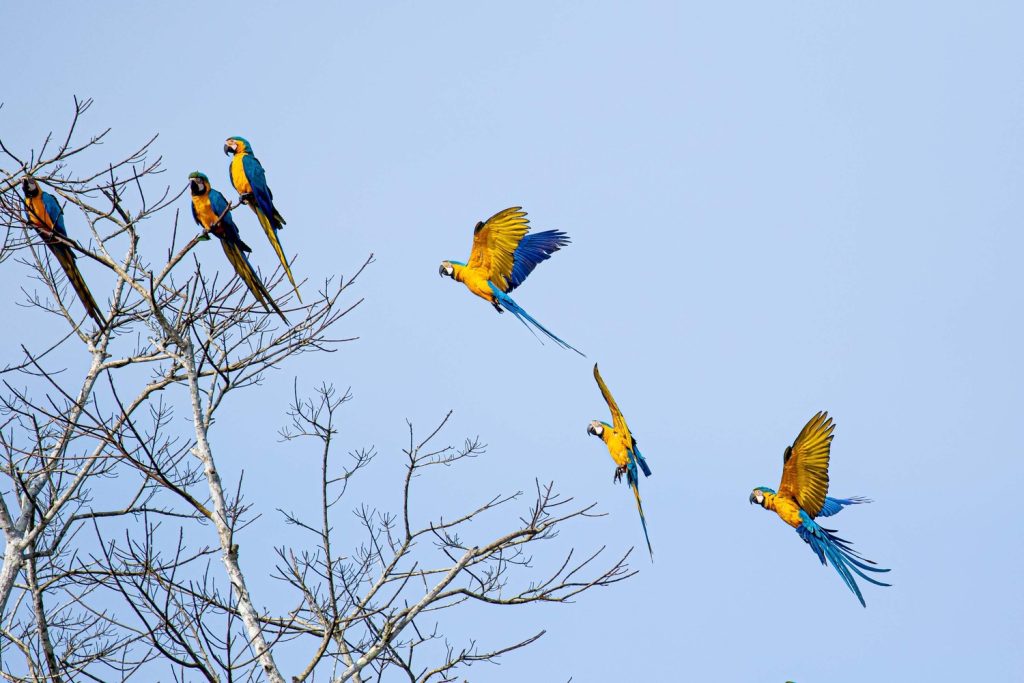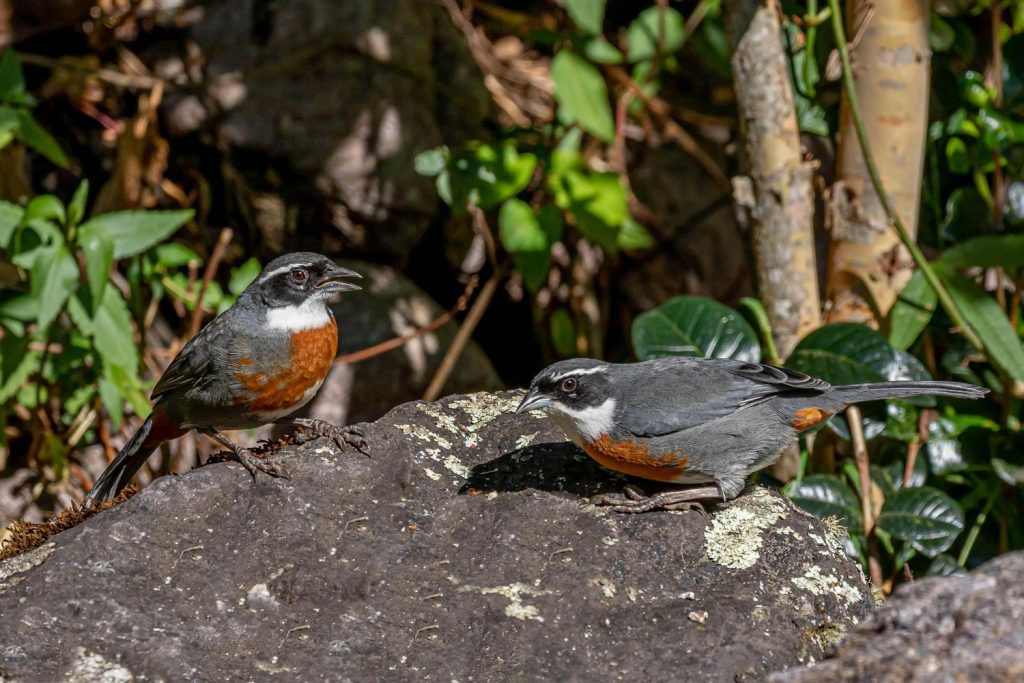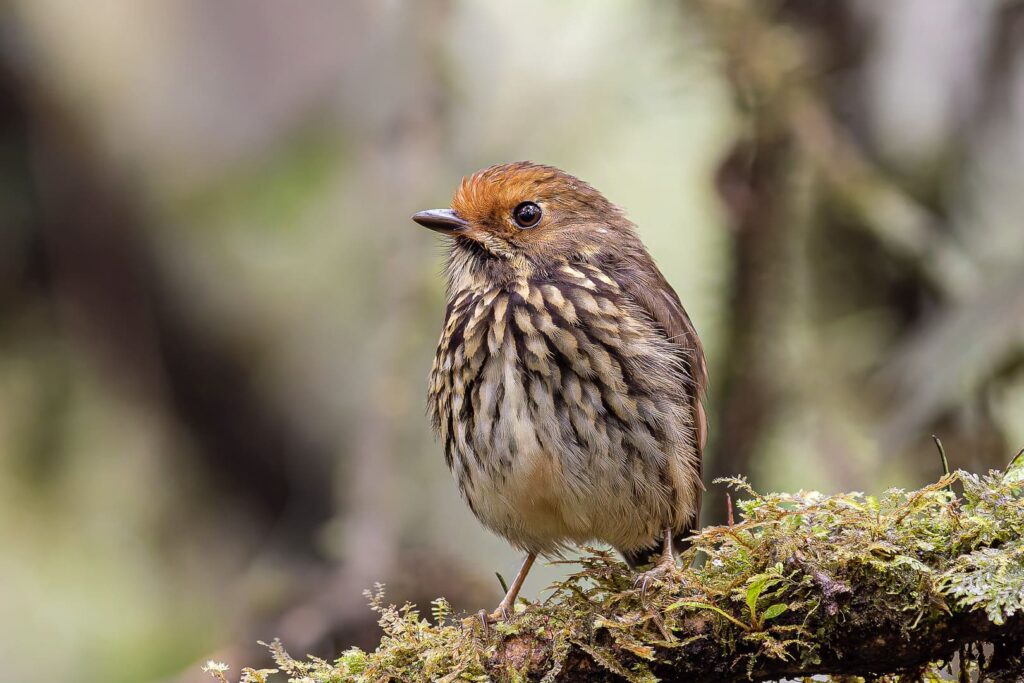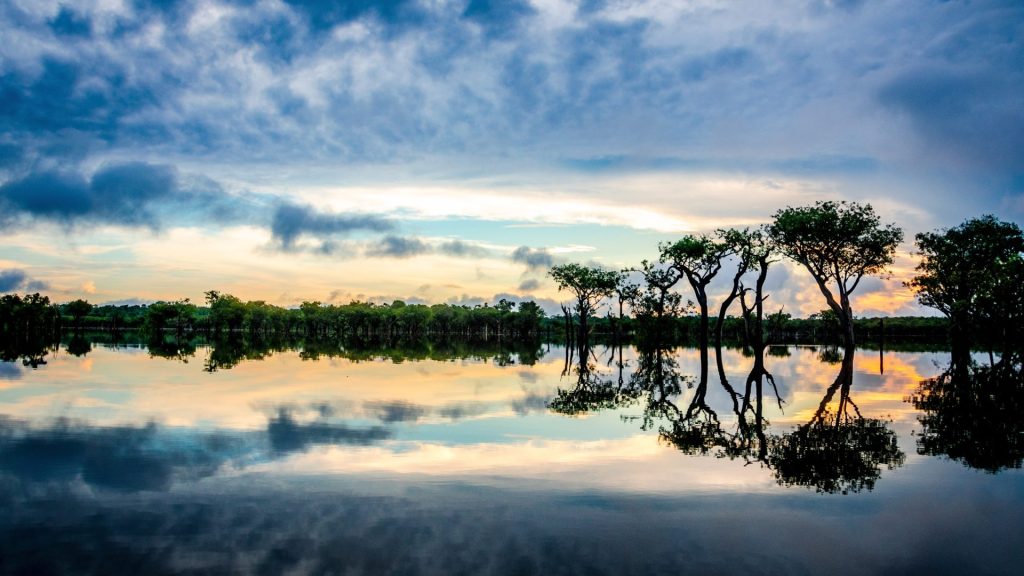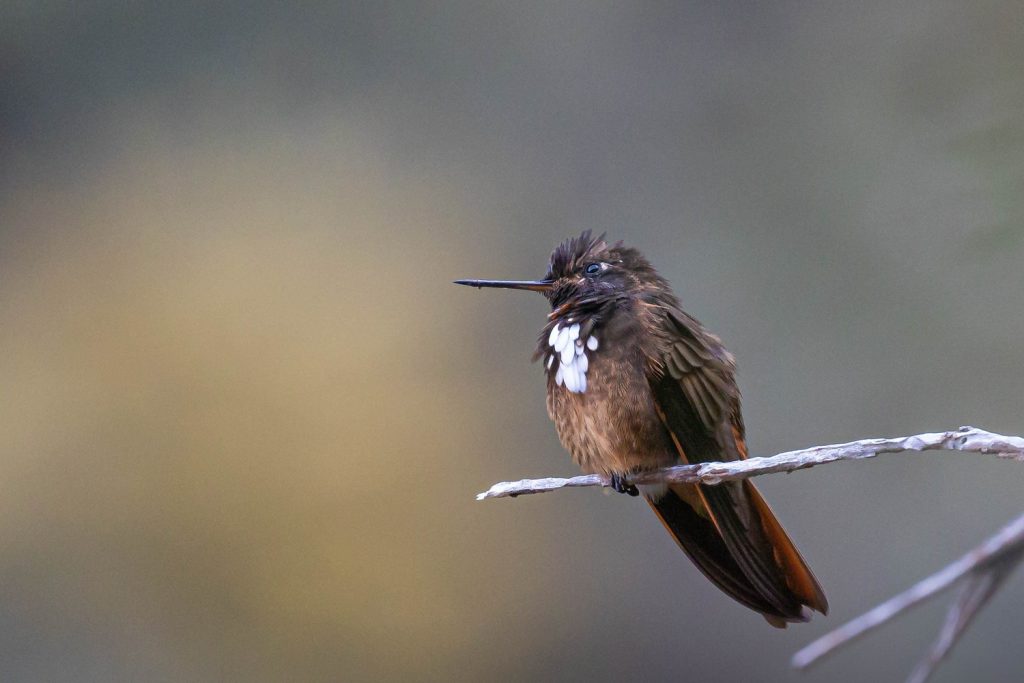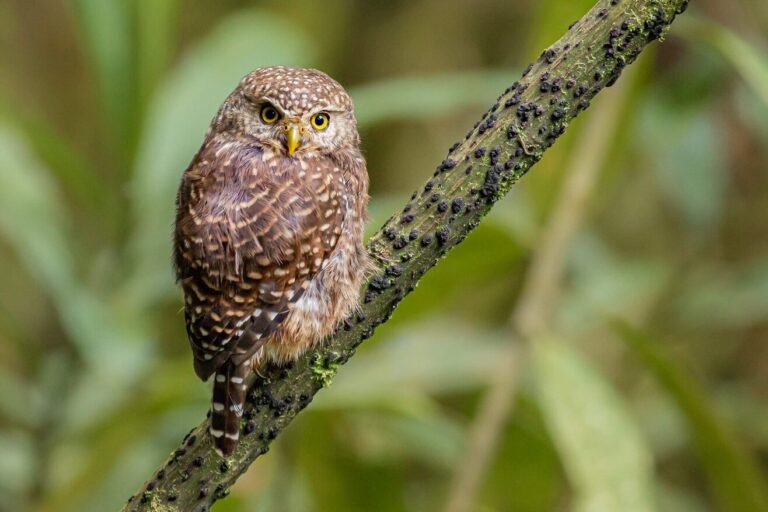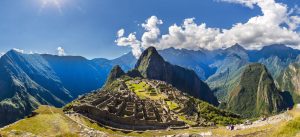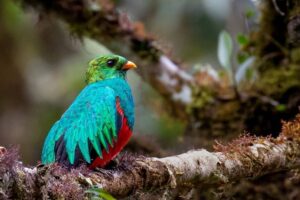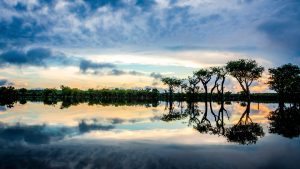Birding at Huacarpay Lake
Welcome to the vibrant world of birding at Peru, where the diverse landscapes and rich ecosystems create a paradise for bird enthusiasts. Nestled just 30 kilometers southeast of Cusco, Huacarpay Lake is a high-Andean wetland that offers a captivating experience for birdwatchers. At an altitude of 3,020 meters, this Ramsar-designated wetland is renowned for its stunning birdlife and breathtaking scenery.
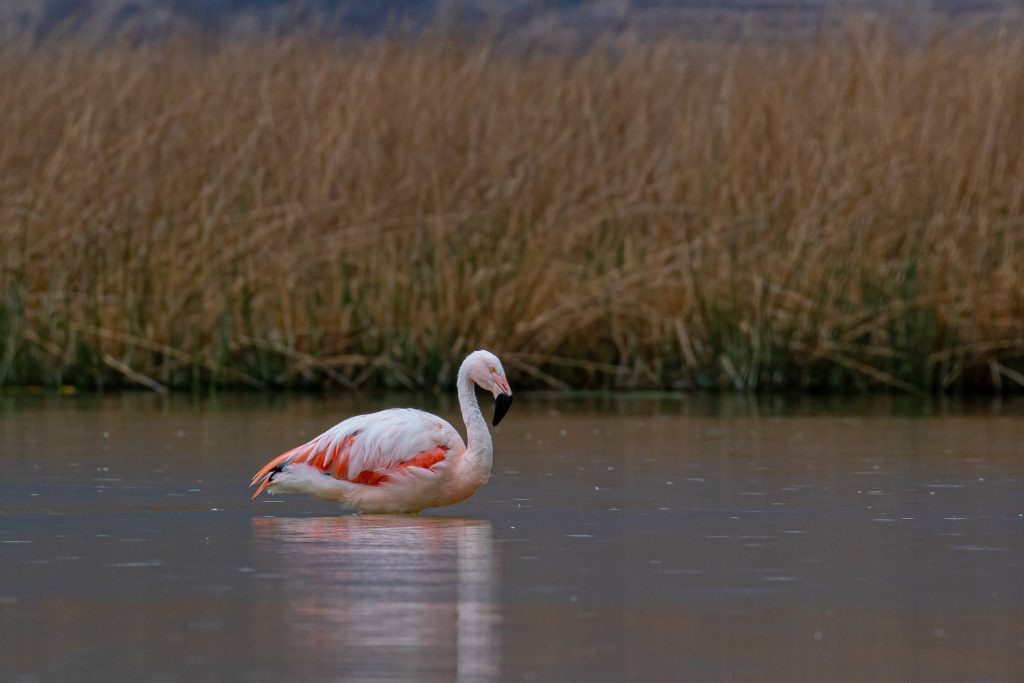
A Birdwatcher’s Paradise
Huacarpay Lake is part of the Lucre-Huacarpay Wetlands, recognized as a site of international importance due to its ecological significance. The wetland’s four permanent lagoons, seasonal lagoon, swamps, and rivers create a mosaic of habitats that attract a diverse array of bird species. With a historical record of over 150 bird species recorded, Huacarpay Lake is a prime spot for birding at Peru.
As you explore the lake’s shores, you’ll encounter an array of birds, from the endemic Bearded Mountaineer and Rusty-fronted Canastero to the colorful Many-colored Rush-Tyrant and Giant Hummingbird. The wetland is also a crucial stopover for migratory birds, offering birdwatchers a chance to see species from far and wide.
Endemic and Migratory Birds
One of the most exciting aspects of birding at Huacarpay Lake is the opportunity to see both endemic and migratory birds. Endemic species like the endemics Bearded Mountaineer and Rusty-fronted Canastero, highlight the unique biodiversity of the Andes. Resident for highland lakes such as Yellow-billed Pintail, Puna Teal, Andean Negrito, Plumbeous Rail, etc; highland birds like White crested Elaenia, Andean Flicker, Giant Hummingbird, Sparkling Violetear, Blue-and-Yellow Tanager, etc and Migratory birds, such as the Upland & Pectoral Sandpiper, Yellowlegs, Bobolink, among others during Boreal winter add seasonal diversity to the avian population, making each visit a unique experience.

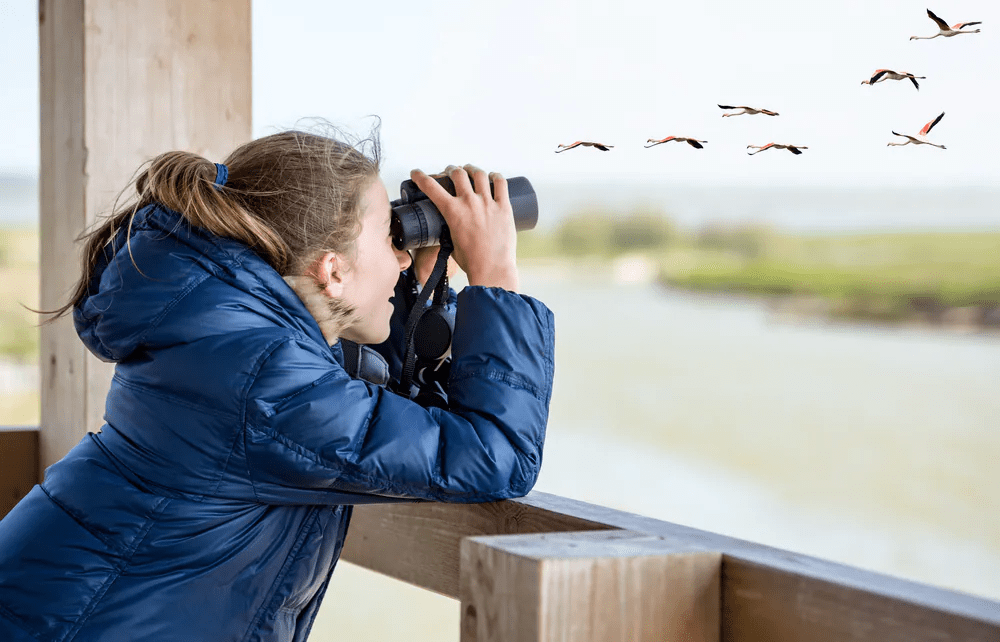
Location, Accessibility, and the Best Time for Birding at Huacarpay Lake
Huacarpay Lake, situated just 30 kilometers southeast of Cusco, is one of the most accessible birding destinations in the region. Its proximity to Cusco makes it an ideal spot for both quick morning excursions and more extended birdwatching trips. In this chapter, we’ll explore the best ways to reach Huacarpay Lake, the optimal times for birding, and tips to ensure you have a memorable and productive visit.
How to Get to Huacarpay Lake
Getting to Huacarpay Lake is straightforward, with several convenient options available:
- By Car or Taxi:
- The most direct way to reach Huacarpay Lake from Cusco is by car or taxi. The journey takes approximately 40 minutes, making it a quick and easy trip. Taxis are readily available in Cusco, and the cost ranges from 100 – 120 soles. This option provides flexibility and comfort, allowing you to start your birding adventure early in the morning but you will need at least basic spanish.
- By Public Transport:
- For a very economical option, you can take a local bus or «colectivo» from Cusco to the nearby towns of Lucre or Andahuaylillas. Buses depart from the station in front of the Regional Hospital along La Cultura Avenue. Keep in mind that in general terms you will need at least basic Spanish when navigating public transport.
- Organized Tours:
- These tours typically include transportation, a knowledgeable guide, and often a meal or snack. This is an excellent option for those who prefer a hassle-free experience with expert guidance to maximize bird sightings.
The Best Time for Birding at Huacarpay Lake
Timing your visit to Huacarpay Lake can significantly impact your birdwatching experience. Here are some tips on the best times to visit:
- Early Mornings:
- Birds in the high andes (just like many other enviroments, not but all) are most active during the early morning hours. Activity starts at the lake around sunrise , typically between 5:30 AM and 6:00 AM will give you the best chance to observe a wide variety of species as they begin their day. (Consider that in the tropics day – night timing is similar during the year)
- Seasonal Considerations:
- While Huacarpay Lake offers excellent birding opportunities year-round, some seasons offer unique experiences. The dry season (May to September) generally provides more consistent weather, with clear skies and less rain, making it easier to spot birds. The wet season (October to April), however, can attract migratory species, adding to the diversity of birdlife.
- Migratory Patterns:
- Huacarpay offers a great variety of resident and some endemic species bue, depending on the time of year, you may encounter different migratory birds. In general terms, during the wet season (November – April) you might spot species North America migrants, taking advantage of the rich feeding grounds provided by the wetlands.
Practical Tips for a Successful Birding Trip
To make the most of your birding trip to Huacarpay Lake, consider the following practical tips:
- Gear Up:
- Bring a good pair of binoculars and a camera with a zoom lens to capture distant birds. A field guide to Peruvian birds can also be invaluable for identifying species.
- Dress Appropriately:
- The weather in the high Andes can be unpredictable, so dress in layers. A hat and sunscreen are essential to protect against the strong high-altitude sun, while a warm jacket will keep you comfortable in the cool morning air.
- Hydrate and Snack:
- Bring plenty of water and some snacks to keep you energized throughout the morning. If you’re on an organized tour, check if they provide refreshments.
- Respect Wildlife:
- Maintain a respectful distance from the birds and their habitats. Use binoculars and zoom lenses to observe without disturbing them. Staying quiet and moving slowly will also help you get closer to the birds.
- Plan Ahead:
- If you’re joining a guided tour, book in advance to ensure availability. Research the specific birds you hope to see and communicate your interests to your guide.
By following these tips and planning your visit accordingly, you’ll be well-prepared to enjoy the incredible birdwatching opportunities at Huacarpay Lake. This unique wetland, with its rich biodiversity and stunning natural beauty, is a highlight of birding at Peru and a must-visit destination for nature enthusiasts.
Birding at Huacarpay Lake: Endemic and Migratory Highlights
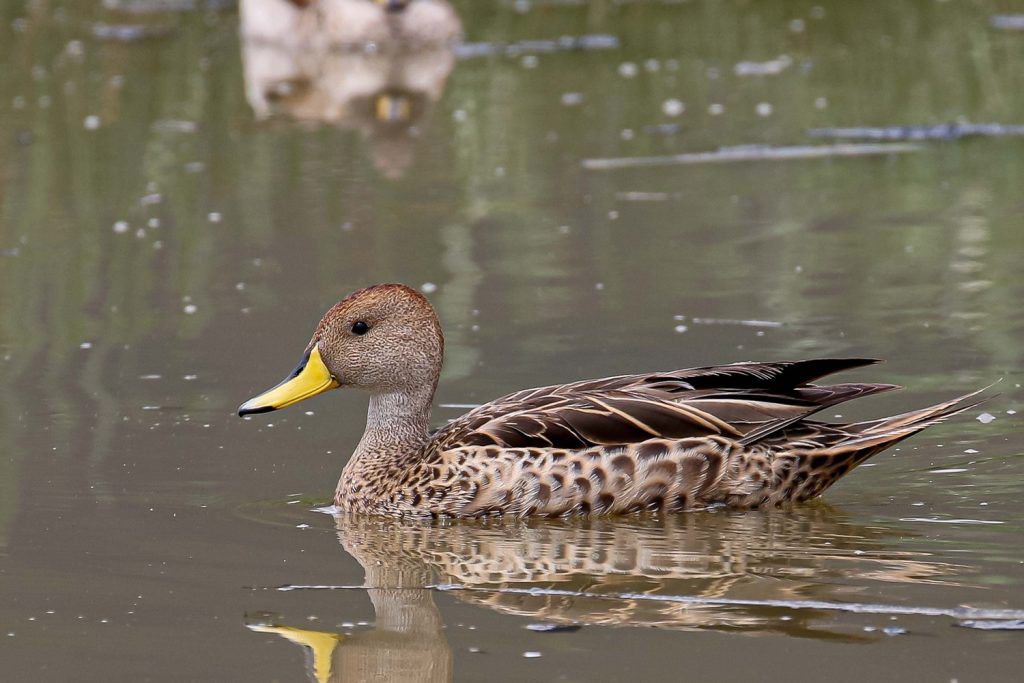
Huacarpay Lake is a treasure trove for birdwatchers, offering an incredible variety of bird species, both endemic and migratory. The unique habitat provided by the wetlands supports a diverse avian population, making it a prime location for birding at Peru. In this chapter, we’ll delve into the fascinating bird species you can expect to encounter at Huacarpay Lake and highlight some of the most remarkable ones.
Endemic Birds of Huacarpay Lake
Endemic species are those that are found only in a specific geographic area and nowhere else in the world. Huacarpay Lake is home to several such species, making it a special destination for birders looking to see birds they can’t find anywhere else.
- Bearded Mountaineer (Oreonympha nobilis):
- This striking hummingbird is one of the star attractions of Huacarpay Lake. Known for its iridescent plumage and long tail, the Bearded Mountaineer can often be seen hovering near wild tobacco and eucalyptus flowers around the lake. Its presence is a testament to the unique biodiversity of the region.
- Rusty-fronted Canastero (Asthenes ottonis):
- Another endemic gem, the Rusty-fronted Canastero, is a small, energetic bird that inhabits the scrubs and grasslands surrounding Huacarpay Lake. Its distinctive rusty-colored forehead and lively behavior make it a delightful sight for birdwatchers.
- Chestnut-breasted Mountaneer (Poospizopsis caesar)
Other Notable Species
Huacarpay Lake’s diverse habitats support a wide range of bird species, from raptors to songbirds. Here are a few more highlights:
- Giant Hummingbird (Patagona gigas):
- As the name suggests, the Giant Hummingbird is the largest hummingbird species in the world. Watching this sizeable yet graceful bird hover and feed is a remarkable experience.
- Plumbeous Rail (Pardirallus sanguinolentus):
- This secretive bird is often heard before it is seen, thanks to its distinctive calls. It prefers the dense vegetation of the wetland edges and is known for its striking plumage and red legs.
- Andean Lapwing (Vanellus resplendens):
- The Andean Lapwing is a ground-dwelling bird often seen in open areas near the lake. Its contrasting black and white plumage and distinctive call make it easy to identify.
- Many-colored Rush-Tyrant (Tachuris rubrigastra):
- This vibrant bird is a visual treat with its multicolored plumage. The Many-colored Rush-Tyrant is often seen flitting through the reeds, adding a splash of color to the wetland scenery. It’s a favorite among birdwatchers for its striking appearance and active behavior.
- Andean Duck (Oxyura ferruginea):
- Known for its stiff tail and diving habits, the Andean Duck is a fascinating bird to observe. It frequents the deeper parts of the lake, diving for food and sometimes seen basking in the sun on the water’s surface.
- Bearded Mountaineer (Oreonympha nobilis):
- This striking hummingbird is one of the star attractions of Huacarpay Lake. Known for its iridescent plumage and long tail, the Bearded Mountaineer can often be seen hovering near wild tobacco and eucalyptus flowers around the lake. Its presence is a testament to the unique biodiversity of the regio
- Rusty-fronted Canastero (Asthenes ottonis):
- Another endemic gem, the Rusty-fronted Canastero, is a small, energetic bird that inhabits the scrubs and grasslands surrounding Huacarpay Lake. Its distinctive rusty-colored forehead and lively behavior make it a delightful sight for birdwatchers.
- Puna Teal (Spatula puna)
- The Puna Teal is a common sight in the high Andean wetlands, including Huacarpay Lake. With its distinctive blue-gray plumage and striking white head, this elegant duck is easily recognizable. The Puna Teal is often seen dabbling in the shallow waters, feeding on aquatic plants and small invertebrates. Its serene presence and unique coloration make it a favorite among birdwatchers, adding a touch of grace to the wetland landscape.
- Yellow-billed Pintail (Anas georgica)
- The Yellow-billed Pintail is another captivating species found at Huacarpay Lake. Known for its slender body and long neck, this duck features a bright yellow bill that contrasts beautifully with its brown and white plumage. Often seen gliding gracefully across the water or foraging along the shoreline, the Yellow-billed Pintail adds an element of elegance and charm to the birdwatching experience. Its striking appearance and gentle demeanor make it a delightful sight for visitors.
- Andean Negrito (Lessonia oreas)
- The Andean Negrito is a small, distinctive bird commonly found in the open areas around Huacarpay Lake. With its black and chestnut plumage and contrasting white wing patches, this active bird is a joy to watch. The Andean Negrito is often seen hopping on the ground or perching on low vegetation, adding dynamic movement to the landscape. Its striking colors and lively behavior make it a popular subject for bird photographers and enthusiasts.
- Andean Flicker (Colaptes rupicola)
- The Andean Flicker is a large woodpecker species that brings a splash of excitement to the high Andean environment. Sporting a combination of brown, black, and white plumage with distinctive barred patterns, the Andean Flicker is often seen clinging to tree trunks or rocks as it searches for insects. Its unique appearance and energetic foraging habits make it a fascinating bird to observe. The loud, rhythmic drumming of its beak on wood is a signature sound in its habitat, drawing the attention of birdwatchers.
- Cinereous Harrier (Circus cinereus)
- The Cinereous Harrier is a striking raptor that adds a touch of majesty to Huacarpay Lake’s birdlife. With its slender body, long wings, and distinctive gray and white plumage, this harrier is often seen gliding low over the wetlands in search of prey. Its graceful flight and sharp hunting skills make it an impressive sight. The Cinereous Harrier’s presence highlights the ecological richness of the lake, attracting birdwatchers with its powerful and elegant demeanor.
Tips for Spotting Birds
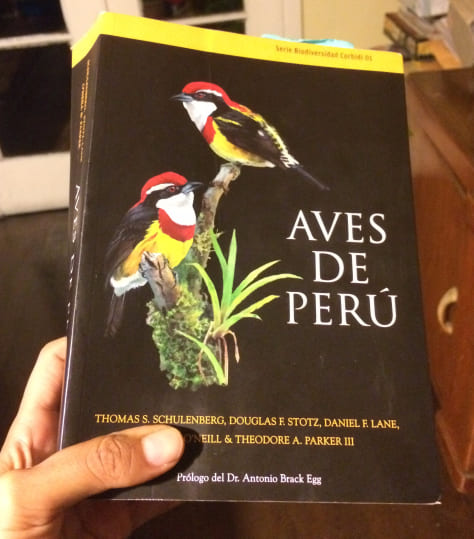
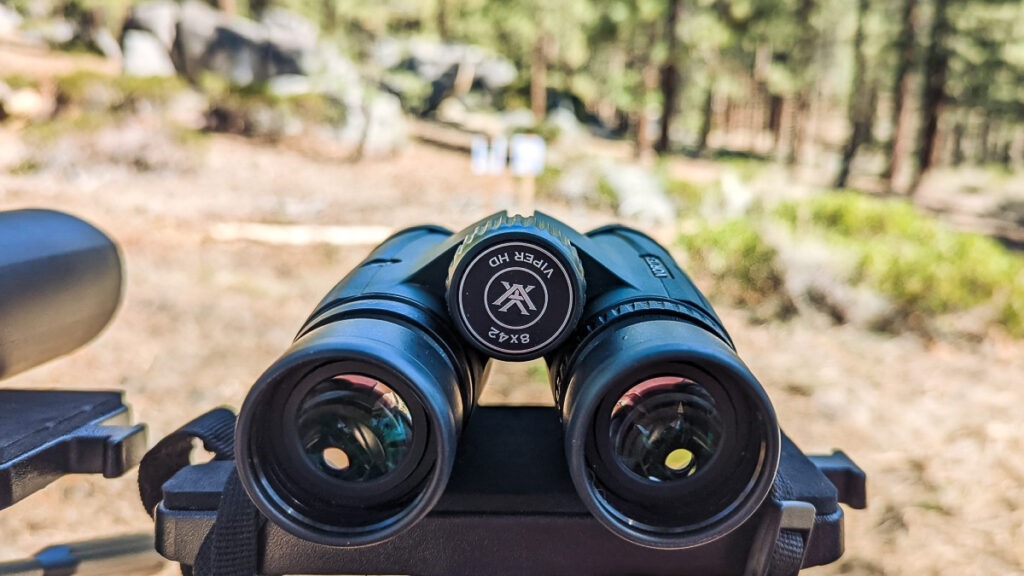
To maximize your birdwatching experience at Huacarpay Lake, consider the following tips:
- Stay Quiet and Move Slowly:
- Birds are sensitive to noise and sudden movements. Staying quiet and moving slowly will increase your chances of observing them up close.
- Use Binoculars and a Field Guide:
- Binoculars are essential for getting a good view of distant birds. A field guide specific to Peruvian birds can help you identify different species and learn more about their behaviors.
- Visit During Early Morning or Late Afternoon:
- Birds are most active during these times. Plan your visit accordingly to see the most species.
- Join a Guided Tour:
- Expert guides can take you to the best spots and help you identify elusive species. They often provide additional context about the birds and their habitats, enriching your experience.
Huacarpay Lake is a haven for birdwatchers, offering a rich tapestry of birdlife against the backdrop of the Andean highlands. Whether you’re looking to see endemic species or marvel at migratory visitors, this wetland promises an unforgettable birding adventure.
Guided Birding Tours at Huacarpay Lake: What to Expect
Exploring Huacarpay Lake with the help of a knowledgeable guide can significantly enhance your birding experience. Guided tours offer the expertise of local birding specialists who can help you spot and identify species, navigate the best birding spots, and provide insightful information about the local ecology and history. In this chapter, we’ll explore what you can expect from a guided birding tour at Huacarpay Lake, from the logistics to the highlights.
Benefits of a Guided Birding Tour
- Expert Knowledge:
- Guides are often seasoned birders with extensive knowledge of the local avifauna. They can identify birds by sight and sound, share fascinating facts about each species, and answer any questions you might have. Their expertise can make the difference between a good birding trip and an unforgettable one.
- Efficient Bird Spotting:
- Guides know the best spots to find specific bird species, including those that are rare or elusive. Their familiarity with the terrain and bird behavior maximizes your chances of seeing a wide variety of birds in a short amount of time.
- Convenience:
- Guided tours typically include transportation to and from Huacarpay Lake, as well as other amenities like meals and snacks. This allows you to focus on birdwatching without worrying about the logistics of your trip.
- Safety and Comfort:
- The Andean highlands can present challenging conditions, from high altitudes to unpredictable weather. Guides are equipped to handle these conditions and ensure your safety and comfort throughout the tour. There are areas where you can´t or shouldn´t enter and guides know excellent but hidden birding spots where they can increase your chances for more wildlife.
- Optics
- Tour guides regularly bring cameras, spotting scopes and extra pair of binoculars. You will appreciate the extra zoom of watching details with a 40x or 60x highquality scope.
What to Expect on a Guided Birding Tour
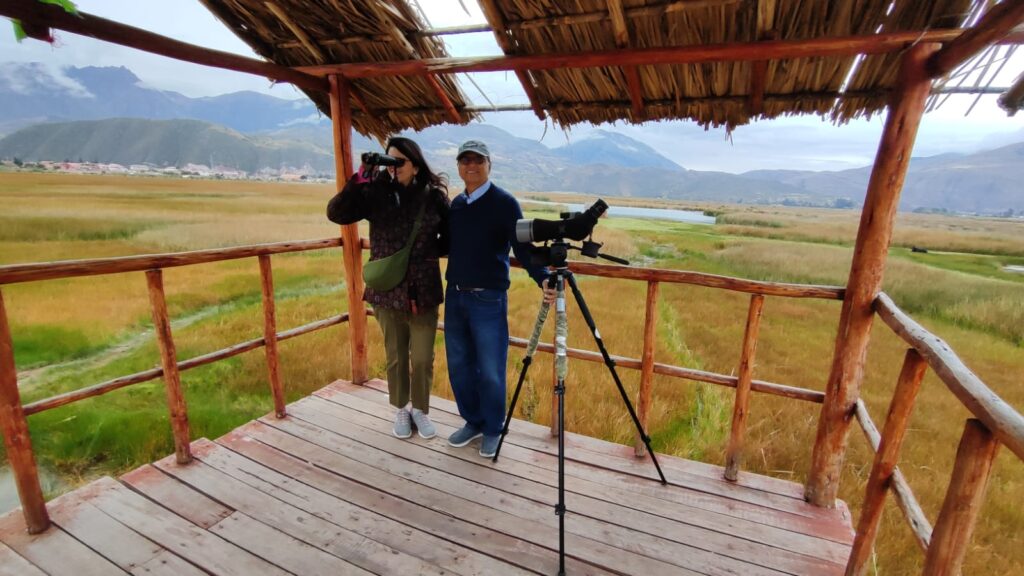
- Early Morning Departure:
- Most tours start early in the morning, around 5:30 or 6:00 AM, to take advantage of the peak bird activity period. You’ll be picked up from your hotel in Cusco and driven to Huacarpay Lake in a comfortable, private vehicle.
- Birdwatching Itinerary:
- Upon arrival at the lake, your guide will lead you to various strategic points around the wetland. The tour typically includes a mix of walking and stationary birdwatching, allowing you to observe birds in different habitats such as open water, reed beds, and scrublands.
- Species Highlights:
- Expect to see a wide range of bird species, from the dazzling Many-colored Rush-Tyrant to the majestic Giant Hummingbird. Your guide will point out key species, including endemics and migratory visitors.
- Meals and Breaks:
- A typical tour includes a break for snacks or breakfast, often enjoyed with scenic views of the lake and surrounding mountains. Some itineraries also include a picnic lunch, providing an opportunity to relax and enjoy the natural beauty of the area while discussing the morning’s sightings.
- Afternoon Birding: (optional)
- Many itineraries consider only birding in the morning, some others combine it with a cultural afternoon visitng the surrounding ruins and finally others continue birding at Huacarpay during the afternoon and is usually dedicated to exploring different areas of the wetland, hummingbird feeders and searching for species that might have been missed in the morning. The tour wraps up in the middle afternoon with a return to Cusco.
Tips for Making the Most of Your Tour
- Communicate Your Interests:
- Let your guide know if there are specific birds you’re keen to see. They can tailor the tour to focus on those species and increase your chances of spotting them.
- Bring the Right Gear:
- Essential items include binoculars, a camera with a zoom lens, a field guide, and a notebook for recording your sightings. Comfortable walking shoes, a hat, sunscreen, and layered clothing are also recommended.
- Stay Hydrated and Energized:
- Bring plenty of water and some snacks to keep your energy levels up. Although tours often provide refreshments, having your own supplies can be useful.
- Be Patient and Observant:
- Birdwatching requires patience and a keen eye. Move slowly, stay quiet, and take the time to observe your surroundings. You’ll be rewarded with more sightings and a richer experience.
Guided birding tours in Huacarpay Lake offer a comprehensive and enriching experience, making the most of this incredible birdwatching destination. With expert guidance, you’ll gain deeper insights into the bird species, their habitats, and the broader ecological significance of the lake. Whether you’re a seasoned birder or a curious novice, a guided tour is a fantastic way to explore the avian wonders of Huacarpay Lake.
Gear and Photography Tips for Birding at Huacarpay Lake
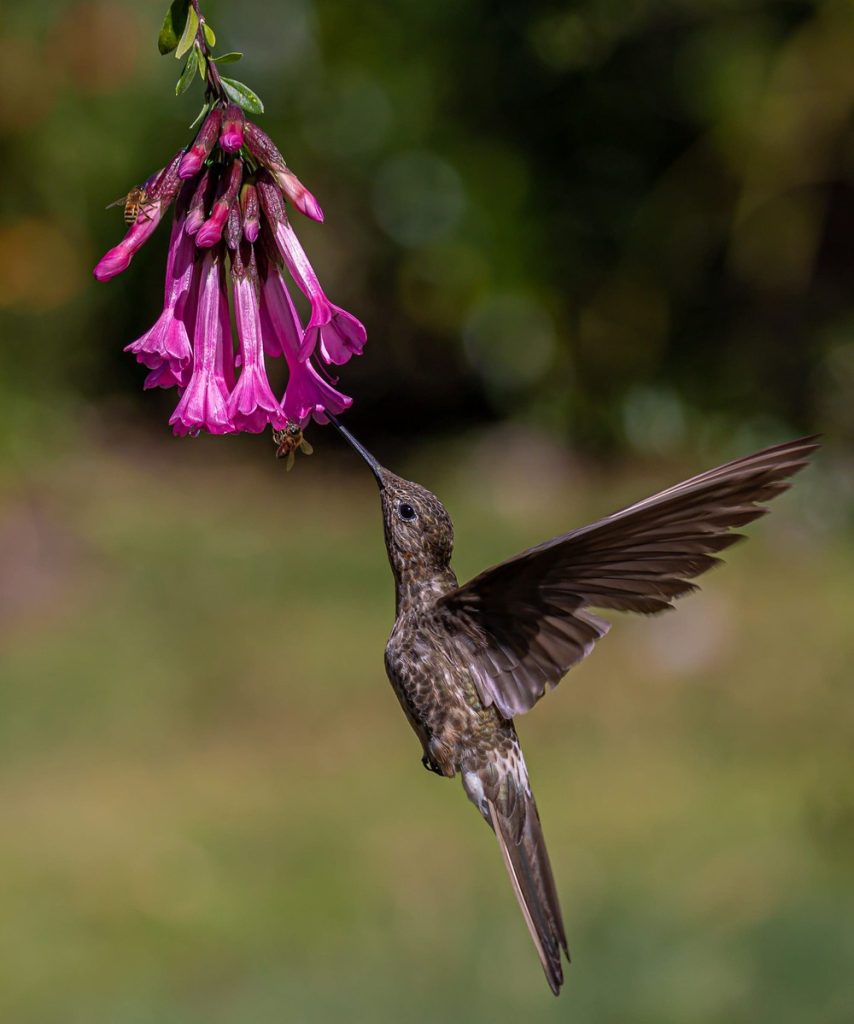
To make the most of your birdwatching adventure at Huacarpay Lake, it’s crucial to come prepared with the right gear and knowledge. This chapter will guide you through the essential equipment for birdwatching, provide tips for capturing stunning bird photographs, and offer practical advice to ensure a comfortable and successful outing.
Essential Birdwatching Gear
- Binoculars:
- A good pair of binoculars is indispensable for birdwatching. They allow you to observe birds from a distance without disturbing them. When choosing binoculars, in open sites like Huacarpay 10x or even 12 x are great for birding, but the general 8x works fine too because of its great field of view, and weight. See more about Choosing the righ magnification for birding HERE.
- Camera with Zoom Lens:
- A camera with a powerful zoom lens (at least 300mm) is essential for capturing detailed bird photographs. DSLRs and mirrorless cameras are popular choices among bird photographers. If you’re using a smartphone, consider investing in a high-quality telephoto lens attachment.
- Field Guide:
- A field guide specific to Peruvian birds can help you identify the species you encounter. Books like “Birds of Peru” by Schulenberg et al. are excellent resources. There are also digital guides and apps available that provide detailed descriptions, photos, and bird calls. See more about Field Guides for Birding in Peru here.
- Notebook and Pen:
- Keeping a notebook to record your observations can enhance your birdwatching experience. Note down the species you see, their behavior, and any other interesting observations. This practice helps improve your bird identification skills and creates a personal record of your adventures.
- Comfortable Clothing:
- Dress in layers to accommodate the varying temperatures in the high Andes. Wear long-sleeved shirts and pants to protect against sun and insects. A wide-brimmed hat and sunglasses will shield you from the sun, while a lightweight, waterproof jacket will keep you dry in case of rain.
- Backpack:
- A small, comfortable backpack is useful for organizing you gear such as jacket, binocs, water and any additional items you might need but, unless you are doing it by foot on your own, your transport will be near all the time and the best birding spots are regularly around the road. Look for a backpack with multiple compartments to keep your equipment organized.
Practical Advice for a Successful Birding Trip
- Stay Hydrated and Energized:
- Bring plenty of water and some snacks to keep your energy levels up. Hydration is crucial, especially at high altitudes where the air is thinner and can be dehydrating. See more about altitude sickness and safety here.
- Respect Wildlife:
- Maintain a respectful distance from the birds and their habitats. Use binoculars and zoom lenses to observe without disturbing them. Stay on designated paths to protect the environment and avoid causing stress to the wildlife.
- Join a Guided Tour:
- Expert guides can enhance your birdwatching experience by helping you locate and identify species. They can also provide valuable insights into the behavior and ecology of the birds, making your visit more informative and enjoyable.
- Plan for Weather Changes:
- The weather in the Andes can change rapidly. Be prepared for rain, wind, and sudden temperature drops. Carry a rain jacket and extra layers to stay comfortable throughout the day.
- Be Patient:
- Birdwatching requires patience and attentiveness. Spend time observing and waiting for the birds to appear. The more time you invest, the greater the rewards in terms of sightings and experiences.
By coming prepared with the right gear and following these photography tips, you’ll be well-equipped to make the most of your birdwatching adventure at Huacarpay Lake. This stunning location, with its diverse birdlife and breathtaking landscapes, offers endless opportunities for both observation and photography, ensuring a memorable experience for all bird enthusiasts.
The Ecological and Archaeological Significance in Huacarpay Lake
Birding at Huacarpay Lake will also get you in contact with an immense ecological and archaeological importance. This high-Andean wetland, located in the heart of Peru, offers a unique blend of natural beauty and historical intrigue, making it a must-visit destination for nature enthusiasts and history buffs alike. In this chapter, we will explore the ecological significance of Huacarpay Lake, its role in conservation efforts, and the rich archaeological heritage that surrounds it.
Ecological Significance
- Biodiversity Hotspot:
- Huacarpay Lake is recognized as a Ramsar site, a designation that highlights its importance as a wetland of international significance. The lake supports a diverse array of flora and fauna, including over 150 species of birds, many of which are endemic to the region. Birding at this wetland’s varied habitats, which include permanent and seasonal lagoons, swamps, and rivers, provide essential resources for both resident and migratory bird species.
- Vital Habitat for Endemic and Migratory Birds:
- The lake is home to several endemic species, such as the Bearded Mountaineer and Rusty-fronted Canastero, making it a critical area for bird conservation. Additionally, Huacarpay Lake serves as an important stopover for migratory birds traveling between North and South America.
- Wetland Ecosystem:
- The wetland ecosystem of Huacarpay Lake plays a crucial role in maintaining the ecological balance of the region. It acts as a natural water filter, improving water quality by trapping sediments and pollutants. The wetland also provides flood control, mitigating the impact of heavy rains on surrounding areas. Its lush vegetation supports a variety of wildlife, including amphibians, reptiles, and insects, which in turn sustain the bird populations.
Conservation Efforts
- Ramsar Site Designation:
- The Ramsar designation underscores the need for ongoing conservation efforts to protect Huacarpay Lake. Local and international organizations work together to monitor the health of the wetland, implement sustainable management practices, and raise awareness about the importance of preserving this vital ecosystem.
- Community Involvement:
- Conservation initiatives often involve local communities, encouraging sustainable practices that benefit both the environment and the people who depend on it. Ecotourism, such as birdwatching tours, provides economic incentives for conservation, creating jobs and generating income while promoting environmental stewardship.
- Research and Monitoring:
- Continuous research and monitoring are essential to understand the dynamics of Huacarpay Lake’s ecosystem and the impact of human activities. Scientists and conservationists conduct studies on water quality, bird populations, and habitat health, using the data to inform conservation strategies and policy decisions.
Archaeological Significance

- Pikillaqta Archaeological Park:
- Huacarpay Lake is part of the Pikillaqta Archaeological Park, a significant historical site that dates back to the Wari civilization. The Wari culture, which flourished between 500 and 1000 AD, left behind a wealth of archaeological treasures, including the ruins of Urpicancha, known as the “House of the Doves.” These ruins showcase advanced architectural techniques and provide a glimpse into the sophisticated society that once thrived in the region.
- Ancient Ruins:
- The area surrounding Huacarpay Lake is dotted with numerous archaeological sites, such as Qaranqayniyuj, Choquepucjio, and Kunturqaqa. These ruins reveal the rich cultural heritage of the Andean civilizations and offer valuable insights into their daily lives, religious practices, and social structures. Exploring these sites adds a historical dimension to the birdwatching experience, allowing visitors to connect with the ancient past while enjoying the natural beauty of the present.
- Cultural Significance:
- The combination of natural and cultural heritage makes Huacarpay Lake a unique destination. The archaeological sites around the lake are not only of historical importance but also hold cultural significance for the local communities. They serve as a reminder of the region’s ancestral heritage and contribute to a sense of identity and continuity.
If you are interested in this Tour, you can book here.
See the full report of Bird species on EBird here.

